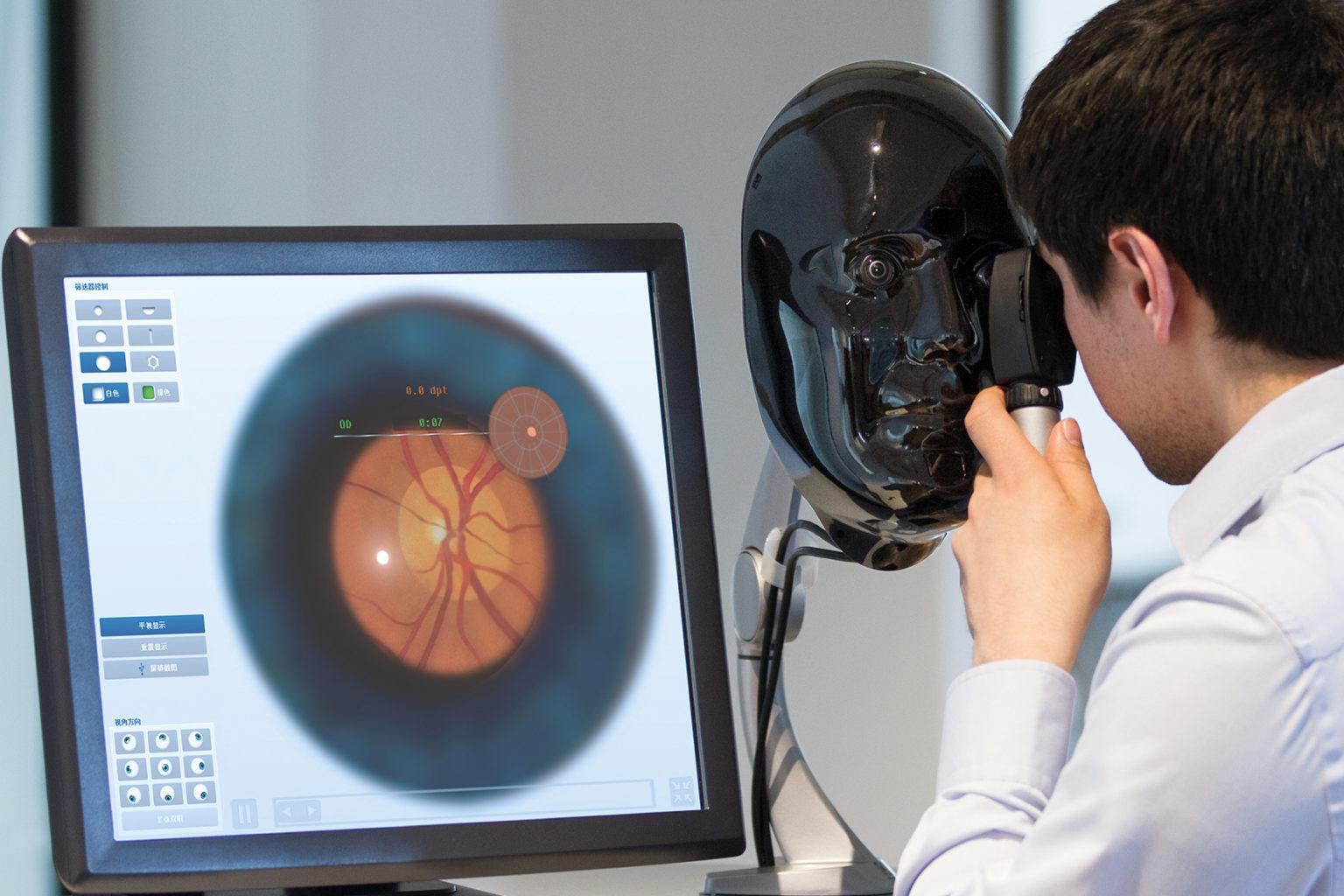A laser indirect ophthalmoscope (LIO) allows physicians to perform detailed examinations of the interior structures of the eye, such as the retina, optic disc, and macula. It provides a high-quality magnified view of the fundus and employs a laser light source rather than traditional halogen bulbs. LIOs offer several benefits over conventional models, including greater illumination and better resolution. They are widely used in screening programs and for diagnosing conditions like glaucoma, macular degeneration, and diabetic retinopathy.
The global laser indirect ophthalmoscope market is estimated to be valued at US$ 116.01 Million in 2023 and is expected to exhibit a CAGR of 4.4% over the forecast period 2023 to 2030, as highlighted in a new report published by Coherent Market Insights.
Market Dynamics:
The rising prevalence of eye diseases remains the primary driver for the laser indirect ophthalmoscope market. According to estimates by the World Health Organization (WHO), at least 2.2 billion people have a vision impairment or blindness, with eye conditions like cataracts, glaucoma, and diabetic retinopathy being among the leading causes worldwide. Laser indirect ophthalmoscopes offer distinct advantages in screening for and managing these chronic illnesses compared to conventional models. Furthermore, ongoing technological innovations focused on improving image quality, reliability, and ease-of-use have increased the adoption of LIOs among eye care professionals.
SWOT Analysis
Strength: The laser indirect ophthalmoscope market offers non-invasive procedures that allow examination of the retina without requiring pupil dilation. This enables doctors to efficiently diagnose diseases. The laser systems offer high-quality images and versatility for addressing different eye conditions. They provide digital documentation and imaging capabilities for record-keeping.
Weakness: The laser indirect ophthalmoscope equipment is expensive to purchase and maintain over the long run. This poses a barrier for smaller clinics and practices. Some older patients may find it difficult to remain still during examination using these systems.
Opportunity: Rising incidence of eye diseases worldwide due to increasing life expectancy and growing diabetic population present significant opportunities. Development of integrated systems combining indirect ophthalmoscopy with other modalities can widen the scope of applications. Incorporating advanced features such as OCT and fundus autofluorescence expands clinical utility.
Threats: Reimbursement challenges and lack of insurance coverage for digital equipment in some regions hamper adoption rates. Availability of cheaper substitute examination methods act as a hindrance. Economic slowdowns can negatively impact the demand for such capital equipment.
Key Takeaways
The global Laser Indirect Ophthalmoscope Market Growth is expected to witness high growth. North America dominates currently due to supportive reimbursement scenario and availability of advanced healthcare infrastructure. Growing population dealing with chronic diseases drive the demand for ophthalmic diagnostic equipment in the region. Asia Pacific is poised to emerge as the fastest growing market owing to rising healthcare spending, increasing awareness about eye care, and rapid expansion of optical retail chains.
Key players operating in the laser indirect ophthalmoscope market are Ellex Medical Lasers Ltd, Iridex Corporation, Alcon, Carl Zeiss Meditec AG, Lumenis Ltd., Topcon Medical Laser System, Nidek Co. Inc., Ziemer Ophthalmic Systems AG, Heine Optotechnik GmbH, and Keeler Ltd. The major companies focus on new product introductions and expanding presence across global markets. Partnerships with eye hospitals and clinics help raise brand visibility and capture untapped opportunities. Aggressive marketing campaigns spread awareness regarding benefits of digital equipment.
The global laser indirect ophthalmoscope market is fragmented with the presence of both international and regional vendors. Differentiation is achieved through technologically advanced products, competitive pricing, and robust after-sales support. Manufacturers face the dual challenges of meeting stringent regulatory norms as well as catering to shifting demand towards multifunctional devices. Those able to align their strategies according to evolving industry trends are expected to gain competitive advantage.
For more insights, read- https://www.pressreleasebulletin.com/laser-indirect-ophthalmoscope-market-trends-size-and-share-analysis/
